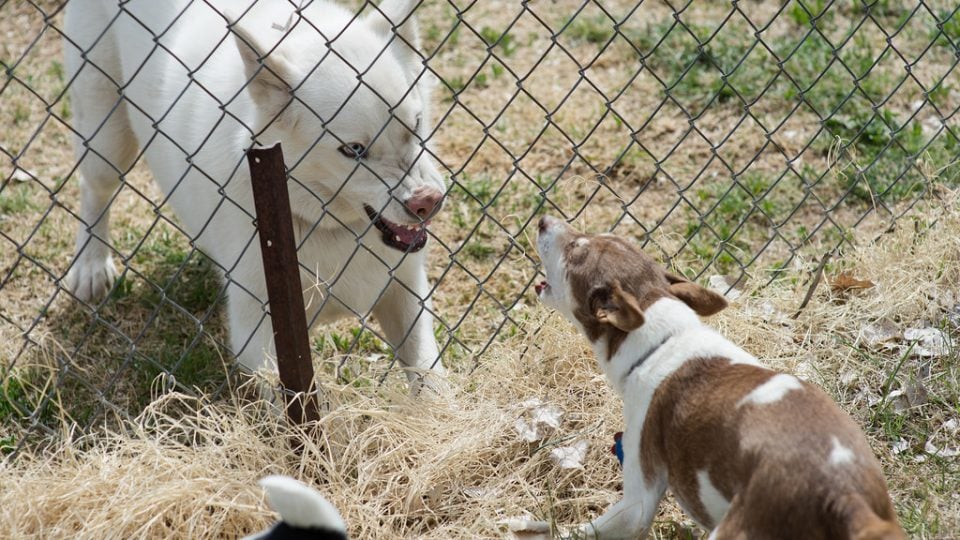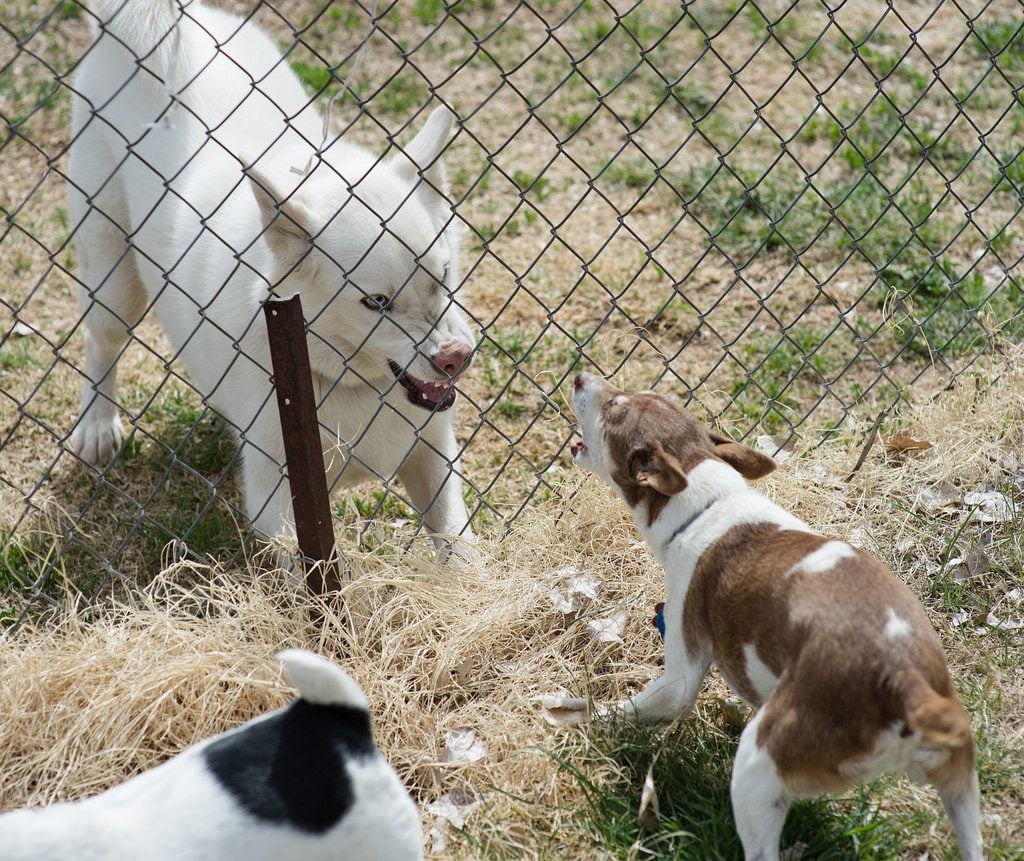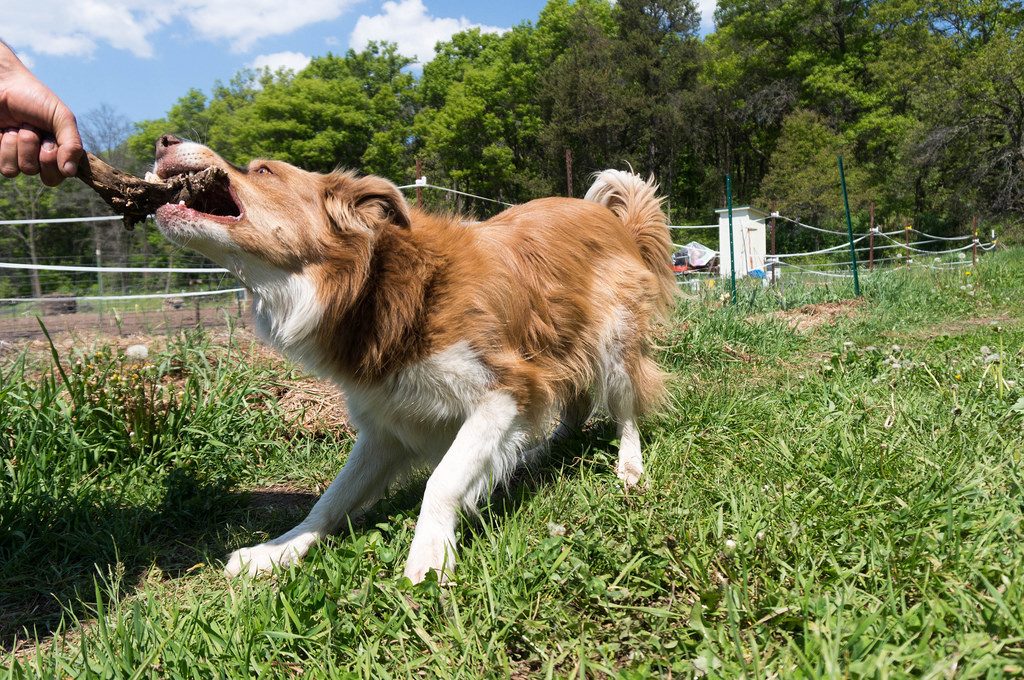My friend Jeannette recently moved from the city to the suburbs, a move that gave her adorable mini Australian shepherd, Arlen, a big yard to zoom around. Unfortunately, the yard came with one unexpected feature: a neighbor dog barking ferociously at the fence. After a while, Arlen, formerly a quiet city boy, picked up a yard barking habit of his own.
Even the friendliest, most social dogs can pick up a fence barking habit. Luckily, for most dogs, the “fence wars” are just a bad habit that can be broken (or even prevented) with training.
Why Dogs Bark at the Fence
Disputes along the fence lines aren’t necessarily a sign of unfriendly or aggressive dogs.
Disputes along the fence lines aren’t necessarily a sign of unfriendly or aggressive dogs. There are several reasons dogs may bark (check out this detailed resource from the ASPCA), but a dog barking excessively at the fence is often due to one of the following:
- Territorial behavior. If your dog tends to bark when the doorbell rings, when a stranger approaches the car, or when a new person or animal enters the house, they may be demonstrating territorial behavior.
- Excitement. Some dogs bark at the fence to say “Hi, new friend! Here I am!” You can probably tell the difference between your dog’s happy/friendly noises and their more distressed or threatening barks, but unfortunately, neighbors and passers-by may mistake them for threats.
- Boredom. Remember, dogs are incredibly social animals. When left in the yard by themselves for long periods of time, they can develop anxious and/or compulsive behaviors, and may bark out of boredom or habit.
Whether your dog is guarding the yard, expressing enthusiasm, or making noise out of boredom, the following tips and tricks may help control their barking in the yard.
Tip 1: Meet Without a Fence
If your dog has a favorite canine “sparring partner” at the fence (like Arlen’s noisy neighbor), the solution may be as simple as introducing the dogs on neutral ground. Letting dogs get to know each other can defuse tension at the fence; after all, who wants to shout at their friend?
Note: only do a dog intro if both dogs are friendly and well-socialized. Talk through the intro in advance with your neighbor, and make sure you both know the proper protocol for dog intros:
- Meet in a neutral location, like a nearby park or quiet street.
- Start with a side-by-side walk, gradually decreasing distance between the two dogs. Remember to reward their good behavior with treats and praise.
- If both dogs are well-socialized and have reliable recall, consider an off-leash play session.
After the first introduction, set up future playdates. Who knows, eventually, you may even work out a shared yard situation with your neighbor! For more on how to conduct proper dog-to-dog introductions, click here.
Tip 2: Exercise Beyond the Yard
One of the benefits of suburban living is lounge time in the yard, but some dogs need a lot more than lounging. If your dog is barking at the fence, she may have a surplus of energy.
Regular, intentional exercise sessions will help your dog stay in great shape and curtail barking. Take your dog to “backyard bootcamp” with one or more of the following activities:
- A good old-fashioned round of fetch. Make use of that yard by sending your dog running around it in all directions!
- Hide and seek in the yard. Place your dog in a sit-stay and hide an assortment of treats around the yard. Then, release her and let her sniff them out. Repeat as needed! (This is also a great indoor, rainy day activity).
- Go for a lengthy walk or jog around the neighborhood before settling in for yard time.
- Set up a doggy obstacle or agility course in the yard, and do one or two training sessions together every day
- Give your dog a puzzle toy to play with in the yard. It will help keep her busy and give her something to think about other than whatever’s on the other side of the fence.
Depending on your dog’s activity level, one or two 20-minute play sessions/workouts a day may be just the thing to help them settle and quiet down.
Tip 3: Back to Basics
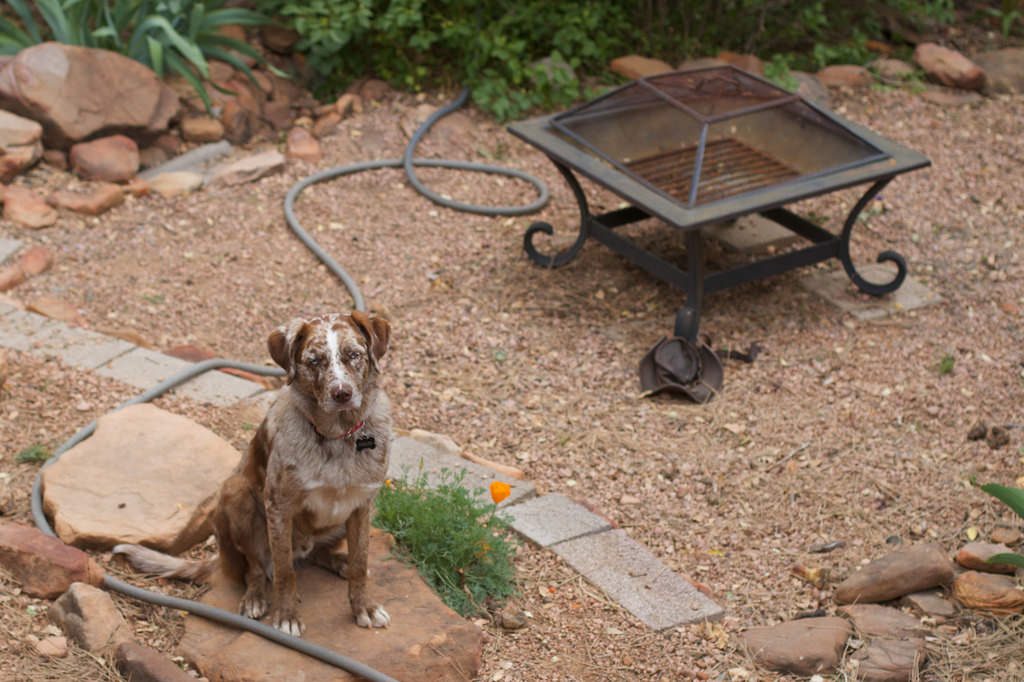
The Long Stay via Instagram/cogdog
Basic obedience training lays the groundwork for troubleshooting problem behavior, and basic commands can be your best friend in managing your dog in the yard.
If your dog has a habit of barking in the yard, sign up for a refresher obedience course, or work on the following commands at home:
- Recall. Useful to call your dog away from triggers (such as the neighbor dog being let outside).
- Settle. Helps your dog “calm down” on cue. Some people prefer to use the “quiet” command.
- Sit/stay. Useful for keeping your dog otherwise occupied when a barking trigger is nearby. Ask your dog to sit and stay when another dog passes by the yard, and be sure to reward her liberally with treats to help her learn that being quiet and still = good!
Basic commands can be your best friend in managing your dog in the yard.
Even if you’ve already been through basic obedience training with your dog, a refresher will help both of you focus and bond. A few five-minute training sessions each day will give your dog a “mental workout” that may prevent boredom (and barking) in the yard.
Tip 4: Prevention and Supervision
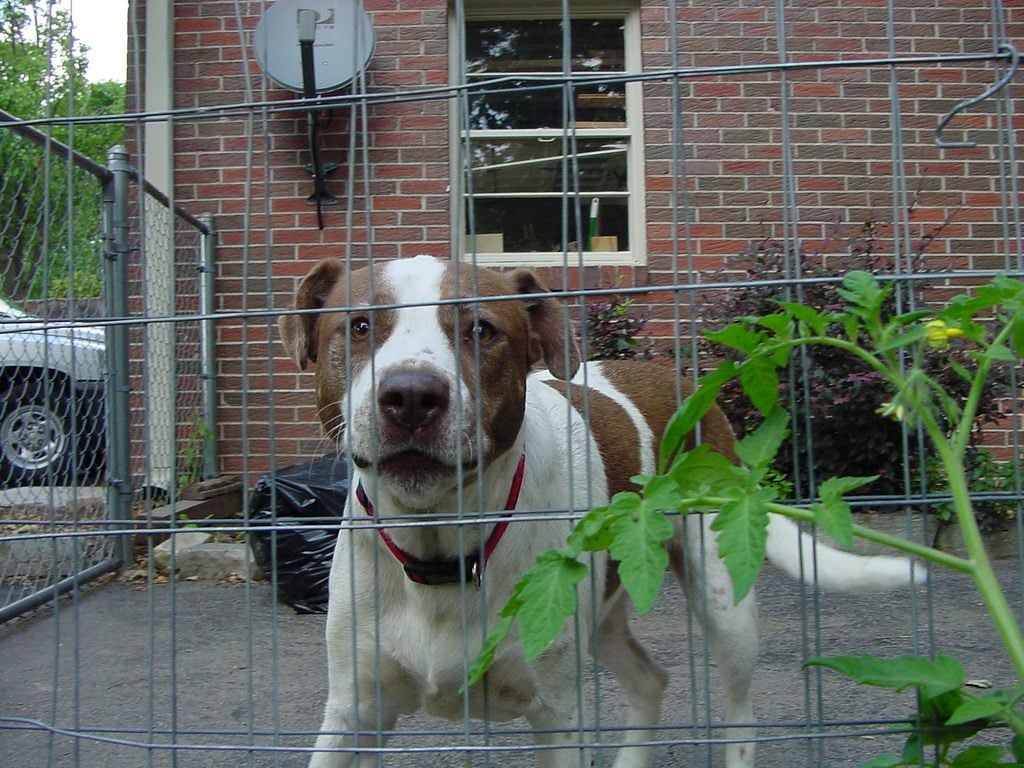
Garden fencing creates a buffer zone between boundaries (via Instagram/stephee)
Training and exercise are vital long-term solutions to yard barking, but let’s be honest, sometimes you need a quick fix until the training kicks in.
Here are a few preventative measures you can take to curtail the fence wars:
- Block visual access (for example, block openings in a wooden fence, or put nylon stripping between chain link)
- Coordinate yard schedules with your neighbor(s) so your dogs don’t have access to one another through the fence
- Add a second barrier to block off the boundary between your yard and the sidewalk or neighbors. A simple chicken wire fence can create a “buffer zone” and eliminate the bark boundary for your dog.
- Supervise your dog in the yard at all times. This is a good idea anyhow; your dog should never be left unattended in the yard. By keeping an eye on them, you can help head off a bark attack before it happens.
As for Arlen, he’s gotten friendly with his new neighbors, and the novelty of barking at them has worn off over time. For some dogs, the “fence wars” are temporary, and the above tips are intended as starting points to head them off. But if your dog exhibits true territorial aggression or compulsive barking behavior, consult a professional trainer for more specific guidance.
As Arlen’s mom can attest, having a yard for your dog is one of the biggest privileges of suburban living. Help your dog be her most neighborly self, and the entire cul-de-sac will have a more enjoyable (and more quiet) summer outside.
